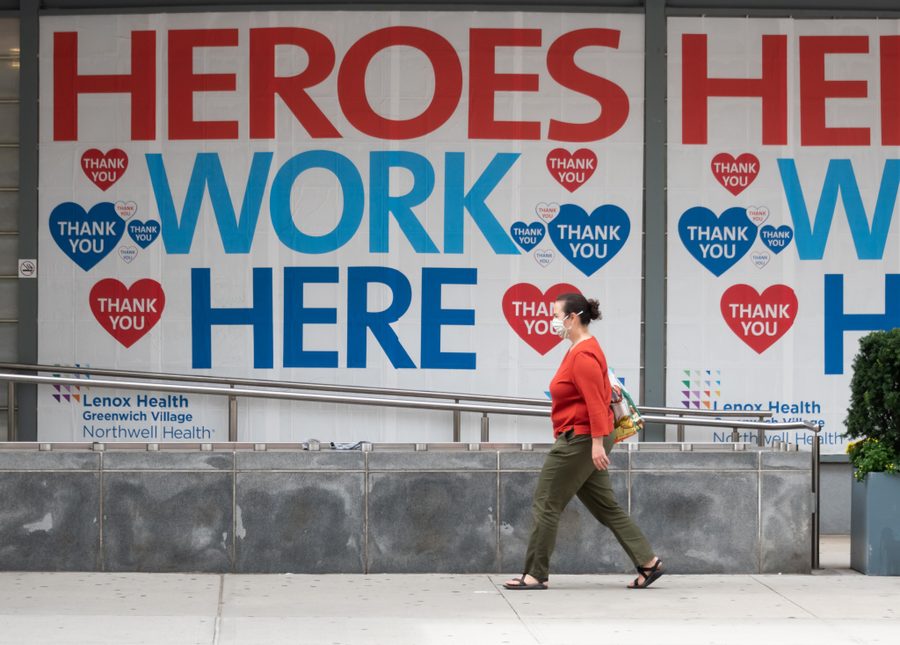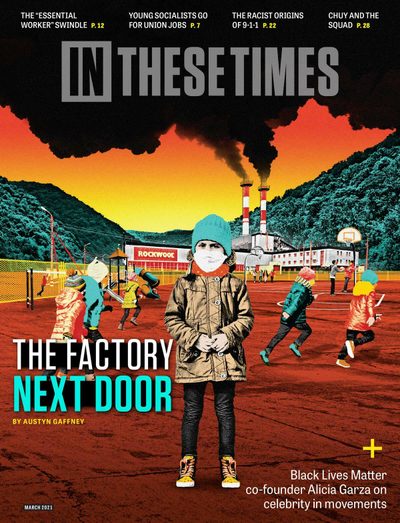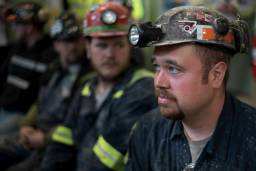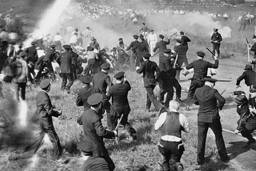The “Essential Worker” Swindle
How this label is used to justify a social order in which workers are abused, discarded and left to die.
Sarah Lazare

Politicians, pundits, CEOs and think tank staffers have spent the past 10 months effusively praising the heroism and sacrifice of essential workers. “I’m not alone in being grateful for the work you are doing,” Amazon CEO Jeff Bezos declared in a March 2020 open letter to the company’s workers who have labored throughout the pandemic, risking their lives to deliver hand sanitizer, face masks and baby formula (and increased Bezos’ personal fortune by 65%). Walmart has taken out television ads praising and thanking essential workers (even as it has imperiled and underpaid those under its employ). House Speaker Nancy Pelosi (D-Calif.) tweeted in July 2020, “Frontline and essential workers across the country have performed heroically since the start of the COVID-19 pandemic.” Former President Trump, who oversaw 400,000 Covid deaths in the U.S. alone, ran a taped segment during the Republican National Convention in which he said to essential workers, “Thank you all very much. Great job.”
But beneath this praise is a troubling truth: Whatever mitigation of suffering and hardship has been achieved during the pandemic, it’s been built on the backs of an “essential” workforce that is hyper-exploited, underpaid, placed in extreme danger, and nowhere close to fairly compensated. The endless praise of these essential workers, from the very architects of their exploitation, only serves to justify and normalize a social order in which people who are disproportionately Black, Brown and low-wage are sacrificed. Instead of talking about how workers are being economically coerced into laboring under deadly conditions, we’re talking about heroism. Instead of criticizing policies and political decisions that send workers to their deaths, we are fawning at workers’ voluntary self-sacrifice. The “essential worker” discourse has the effect of enforcing discipline on a labor force that CEOs and politicians have decided is dispensable. This is not the language of gratitude — it’s the language of throwing people away.
A recent report on Chicago-area workers in the food industry shines new light on the conditions these “essential workers” face. In December, the workers’ rights organizations Warehouse Workers for Justice (WWJ) and Chicago Workers’ Collaborative (CWC) interviewed 90 Chicago-area workers in food production, distribution and logistics (10% of those interviewed are white, 42% are Black and 48% are Latino). Eighty-five percent of the workers interviewed said that when employees raised Covid-19 safety concerns, bosses either failed to respond to complaints, retaliated against people who spoke out, or took actions that were not helpful. Sixty-one percent said they had to go without pay when they were ill or forced to undergo quarantine. Eighty-three percent of the workers who were infected with Covid-19 report that “they did not receive paid sick leave from their employer or government assistance.” And a stunning 96% of workers interviewed said they were not receiving hazard pay.
These workers are being asked to risk their lives every time they clock in to the job, but in return they are receiving no social support or meaningful compensation. One anonymous worker told the researchers, “I had the virus in April and had to quarantine for a month. Without insurance or quarantine pay, I had no choice but to stay home and suffer through it.” Another anonymous worker told researchers of a coworker who “got sick with Covid and passed away.” The person who died had been working while ill and, according to the interviewee, “The company never addressed the death or told us a coworker had died.”
The “essential workers” who are dying or going without pay so they can quarantine were already severely underpaid when the pandemic began, particularly those in the food industry. In 2019, the median wage for food and agricultural workers, for example, was just $13.12, according to the Economic Policy Institute. Meanwhile, just 8% of workers in this sector were represented by unions. Once the pandemic broke out, the Centers for Disease Control and Prevention put out health and safety “guidance” for essential workers. However, according to a research brief from The Shift Project, which collects and analyzes survey data, “The Occupational Safety and Health Administration, the federal agency ordinarily tasked with enforcing regulations to protect workers, has largely left safety standards and protocols up to individual employers.” (On Thursday, President Biden instructed OSHA to issue new guidelines to protect workers from Covid-19.)
Essential workers themselves have been some of the loudest critics of the effusive praise with which their exploitation has been met. “We are tired of taking the risk,” said San Jose, California McDonald’s worker Maria Ruiz, while on strike in April 2020 for hazard pay of an additional $3 per hour. “I’m kind of afraid” to go on strike, she added in an interview with In These Times, “but I’m more afraid to lose my life.” A cashier at a New Seasons Market in Portland, Oregon told In These Times in March 2020, “I don’t really know if any amount of money would make working in this environment and being exposed to this level of risk feel worth it. Personally, I live with my grandmother and mother so it’s just really hard to know if continuing to come to work is the right choice.”
Meanwhile, Koch-funded think tank staffers, Wall Street bankers and even Reagan-era economist Art Laffer have emerged as some of the biggest cheerleaders of sending workers into deadly conditions. “We need to get production back — period,” Laffer proclaimed just weeks into the U.S. pandemic (Trump gave Laffer the presidential medal of freedom in 2019).
Of course, there is a conversation to be had about the need to keep people fed and cared for during the pandemic, a feat that almost certainly requires some degree of sacrifice and hard work in the service of the common good. Food must still get to people’s homes, health workers must still care for the sick and dying, farms must keep growing produce so that people can live. And indeed, many workers are acting heroically, as illustrated when they’ve stood up again and again to defend their lives, and the lives of their coworkers, under harrowing conditions.
But 10 months into this crisis, U.S. society has not had a meaningful collective conversation about what a just, shared sacrifice could look like. We have not talked about how to evenly distribute the burden of danger, how to make sure that each human life is valued as we tackle the mammoth challenges before us. With no real public debate, we are operating under the assumption that if sacrifices must be made, it is the most exploited sectors of the working class that should make them — an attitude that prevails during “normal” times, but now with brutal efficiency. As Hamilton Nolan pointed out in March, we’re not asking Art Laffer to wait tables. We’re not asking politicians to send their children to work the checkout lines in grocery stores. The idea that those options would even be on the table is laughable.
If we continue on the current trajectory, when this is all over, the pandemic is going to be the story of how, in the face of social crisis, an entire class of people was abused, discarded and left to die. All the while, we were told that the only way through the crisis was for the workers who have always been sacrificed for the profits of the few to make greater sacrifices than ever before. And as Black, Brown and poor people disproportionately perished from Covid-19, as Chicago-area food workers languished without sick pay, we were reassured not to be outraged. Because this is noble sacrifice, and essential workers are “heroes.”
Sarah Lazare is the editor of Workday Magazine and a contributing editor for In These Times. She tweets at @sarahlazare.









